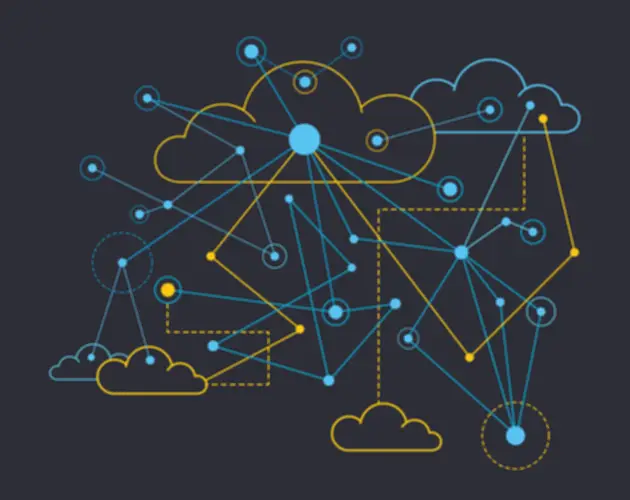You could scale resources based on demand due to elasticity, which could assist you to lower your expenses when demand is low. On one hand, the place businesses use scalability to handle growing workload by allocating sources, elasticity is a wider method that supports auto-scaling based on the altering demand. Edge computing lowers latency and boosts speed by processing knowledge close to the data supply. How elasticity and scalability in cloud computing are handled might be fully modified Digital Trust by it.
Cloud Scalability Vs Cloud Elasticity: Here’s How They Differ
To actually understand the facility and flexibility of cloud and distributed computing, it is useful to take a glance at real-world examples and case research scalability and elasticity. Here, we are going to discover several case research that reveal how completely different organizations have leveraged these technologies to realize their objectives. Cloud computing permits companies to innovate rapidly, scale back prices, and enhance operational effectivity.
Cloud Scalability Vs Elasticity: A Simple Overview In Four Factors

These useful aspects facilitate them to streamline operations while flawlessly assembly evolving customer demands. Finally, let’s contemplate Salesforce, a renowned Customer Relationship Management device. Salesforce utilizes high-scale vertical and horizontal scalability and elastic provisioning talents to accommodate a growing consumer base guaranteeing uninterrupted customer support. Adopting microservices architecture can enhance your cloud’s scalability quotient by diverging large functions into smaller parts that run independently. Adopting scalability allows methods to develop over time instead of constructing hefty upfront investments.

How Web Professionals Can Hone A Shopper Service Mindset
With Wrike’s generative AI and Work Intelligence® answer, you manage and keep ahead of tasks. Wrike is designed to adapt to your project’s needs, ensuring scalability and elasticity all the time work in your favor. These applied sciences are gearing up to play detective, analyzing patterns of workload like seasoned investigators, forecasting calls for and tweaking sources on the fly to ensure every little thing runs as smoothly as silk. Business could be unpredictable, and demand can skyrocket in a single day or fluctuate seasonally.
The Benefits Of On-premise Databases
- Elasticity supplies the performance to automatically improve or lower assets to adapt dynamically based mostly on the workload’s calls for.
- But at the scale required for even a “smaller” enterprise-level group to benefit from its cloud system, the costs can add up quickly if you aren’t mindful of them.
- Elasticity provides the flexibility to seamlessly adapt to altering demand with out human intervention.
- Once the frenzy wanes again to normalcy, these “temporary” servers stop operation, effectively demonstrating elastic cloud computing power and maneuverability.
● Vertical scaling — Scaling up or down vertically includes adding extra sources similar to RAM or processing power to your present server when you may have an elevated workload. No code alterations are required for this type of scaling as you may be only adding on further growth units. Keep in thoughts that with vertical scaling, your efficiency could also be affected, as the server’s dimension and capability restrict the whole amount of growth. A comparable concept to cloud scalability is cloud elasticity, which is the system’s capacity to increase and contract based mostly on workload demands.
Elasticity entails short-term planning, i.e., solely to cope with seasonal demands. Purchasing tickets for a practice or an airplane during a trip can also have the identical impact. Further, since it operates on a pay-as-you-go basis, you probably can select to function with much less capability for regular days. Arpit Sharma is a Senior Content Marketer at Motadata with over eight years of expertise in content material writing.

A public cloud is a sort of cloud computing during which a cloud service supplier makes computing sources obtainable to users over the basic public internet. These embrace SaaS purposes, individual digital machines (VMs), naked steel computing hardware, complete enterprise-grade infrastructures and development platforms. These assets could be accessible for free or according to subscription-based or pay-per-usage pricing models. This capacity to pare resources makes the “pay as you go” approach to IT attainable. With cloud computing, customers solely pay for the assets they use at any given time.
Thus, to find a way to assure steady growth and distinctive efficiency, enterprises should implement new server functionalities. Vertical Scaling, nevertheless, includes altering instance sizes or growing the depend or velocity of assets, memory, or CPUs. Even a few of the streaming platforms like Netflix can use this approach to manage the extreme visitors typically tracked particularly during in style releases. As a end result, there is a sudden spike within the number of users, nearly from 100 to 3000 in on the same time. Now, all of a sudden your staff decides to run a sale or offer exciting deals to attract more customers. Agbaje Feyisayo is a dynamic content marketing professional boasting over 10 years of experience in product marketing.
The flexibility and agility of elastic cloud providers give organizations the ability to adapt to short-term variations in workloads. Companies with cloud operations that experience unpredictable shifts in demand often flip to the elastic cloud providers obtainable in a public cloud. The primary difference between cloud scalability and elasticity lies in their core goals. Scalability emphasizes flexibility, enabling methods to deal with increased workloads by adding sources.
Assure that you just conduct comprehensive research to discern feasibility before deciding to incorporate these cutting-edge technologies totally into your processes. Performance testing tools similar to Apache JMeter or Gatling provide useful insights into system behavior underneath varying load situations. They simulate high utilization loads and facilitate stress testing situations giving a glimpse into potential scalability limitations. In essence, Coca-Cola capitalized upon Azure’s scalable AI algorithms to investigate gross sales data from tens of millions of vending machines worldwide.
Those with inadequate cloud elasticity risk shedding customers and can undergo reputational injury. ● Diagonal scaling — As the name hints, diagonal scaling is a combination of vertical and horizontal scaling. Organizations can grow vertically till they hit the server’s limit, and then clone the server to add more resources as wanted. This is a good answer for organizations that face unpredictable surges because it allows them to be agile and flexible to scale up or reduce.
Cloud computing has also become indispensable in business settings, from small startups to world enterprises. The cloud computing mannequin offers prospects greater flexibility and scalability in comparability with traditional on-premises infrastructure. Its two options, Cloud elasticity and Cloud scalability, manage to keep the resource intact. Those two make positive that the assets are neither missing nor getting wasted in anyhow.
Most people use the ideas of cloud elasticity and scalability interchangeably, though these phrases are not synonymous. Recognizing these distinctions is important to guarantee that the business’s calls for are dealt with effectively. New employees need extra resources to deal with an rising number of customer requests gradually, and new options are launched to the system (like sentiment evaluation, embedded analytics, and so on.). In this case, cloud scalability is used to maintain the system’s resources as consistent and environment friendly as possible over an prolonged time and development. Lastly, container orchestration solutions like Kubernetes deserve honorable mentions as force multipliers to container-induced elasticity vs scalability benefits realized for complicated cloud deployments. It not solely keeps observe of load variations dynamically but additionally adjusts container allocations routinely – thus making certain responsive elastic cloud scaling, without guide intervention.
Most essentially, constructing stateless applications is integral – in simpler phrases, applications must be constructed so they do not save client-based information from one session to the subsequent. Horizontal Elasticity, sometimes called “elastic scaling”, addresses changes in capability by manipulating the amount of software situations running concurrently. In essence, when demand spikes, extra cases are spawned; conversely, when demand plummets, superfluous instances are terminated seamlessly.
Flexibility is one other cornerstone attribute possessed by containers that expands both elasticity and scalability within the AWS, Azure or some other cloud ecosystem. Secondly, infrastructure automation plays an influential position in each scalability and elasticity. Traditionally, setting up servers was an arduous task requiring physical hardware adjustment. Remarkably, this hassle has been eliminated due to automated infrastructure set-up available via providers like Azure Elasticity. In summary, these hurdles don’t necessarily counteract the benefits provided by elasticity and scalability in cloud computing. However, they definitely warrant careful consideration during your journey in direction of embracing this environment friendly know-how.
Transform Your Business With AI Software Development Solutions https://www.globalcloudteam.com/ — be successful, be the first!
